- News
- Reviews
- Bikes
- Accessories
- Accessories - misc
- Computer mounts
- Bags
- Bar ends
- Bike bags & cases
- Bottle cages
- Bottles
- Cameras
- Car racks
- Child seats
- Computers
- Glasses
- GPS units
- Helmets
- Lights - front
- Lights - rear
- Lights - sets
- Locks
- Mirrors
- Mudguards
- Racks
- Pumps & CO2 inflators
- Puncture kits
- Reflectives
- Smart watches
- Stands and racks
- Trailers
- Clothing
- Components
- Bar tape & grips
- Bottom brackets
- Brake & gear cables
- Brake & STI levers
- Brake pads & spares
- Brakes
- Cassettes & freewheels
- Chains
- Chainsets & chainrings
- Derailleurs - front
- Derailleurs - rear
- Forks
- Gear levers & shifters
- Groupsets
- Handlebars & extensions
- Headsets
- Hubs
- Inner tubes
- Pedals
- Quick releases & skewers
- Saddles
- Seatposts
- Stems
- Wheels
- Tyres
- Health, fitness and nutrition
- Tools and workshop
- Miscellaneous
- Cross country mountain bikes
- Tubeless valves
- Buyers Guides
- Features
- Forum
- Recommends
- Podcast
review
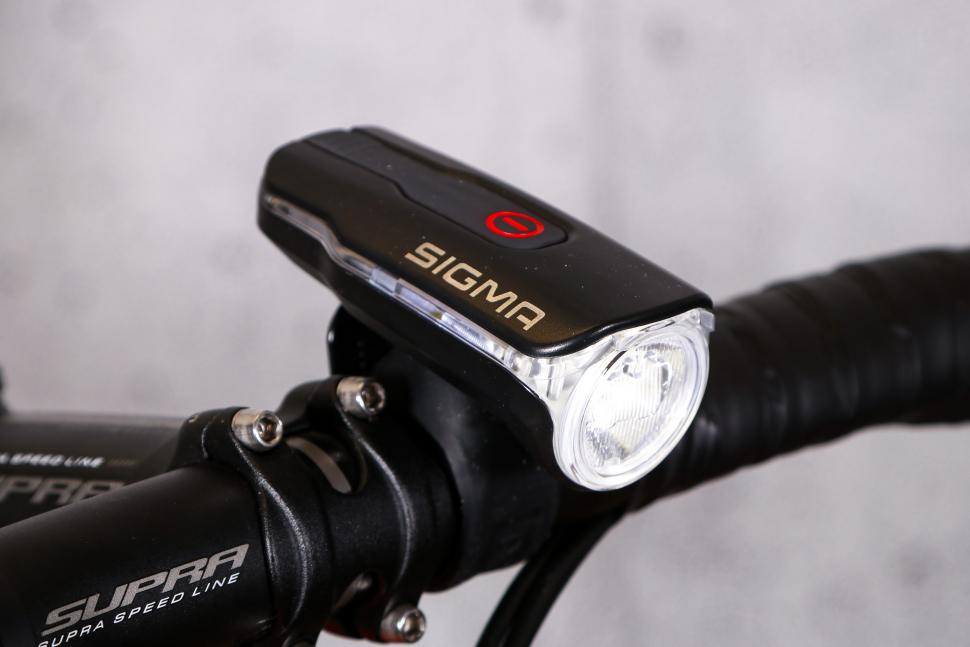 2021 Sigma Aura 60 Headlight.jpg
2021 Sigma Aura 60 Headlight.jpg£49.99
VERDICT:
Practical and long-lasting headlight for general riding, but not the best for unlit roads
Good output for built-up areas
Generous run times
Beam pattern is limited for unlit roads use
Relatively long charge times
Weight:
102g
Contact:
At road.cc every product is thoroughly tested for as long as it takes to get a proper insight into how well it works. Our reviewers are experienced cyclists that we trust to be objective. While we strive to ensure that opinions expressed are backed up by facts, reviews are by their nature an informed opinion, not a definitive verdict. We don't intentionally try to break anything (except locks) but we do try to look for weak points in any design. The overall score is not just an average of the other scores: it reflects both a product's function and value – with value determined by how a product compares with items of similar spec, quality, and price.
What the road.cc scores meanGood scores are more common than bad, because fortunately good products are more common than bad.
- Exceptional
- Excellent
- Very Good
- Good
- Quite good
- Average
- Not so good
- Poor
- Bad
- Appalling
The Sigma Aura 60 Headlight is a three-mode front light, producing a maximum of 60 lux and generous run times. Its intuitive to use, the beam is good and the charge indicator is informative. Those regularly tackling long stretches of unlit roads are better served elsewhere, though.
Given the price, I wasn't surprised to find a composite body and an IPX4 rating for weatherproofing, but the composites feel solid and are unphased by the everyday carelessness. Aside from some decidedly wet rides, I've subjected ours to quick blasts from the garden hose and sudsy bucket washes with no issues.
> Find your nearest dealer here
The lens is polycarbonate and employs a collimator – a beam-narrower, basically – and has long thin side windows for peripheral illumination. It's stVZO compliant, which is very strict when it comes to beam alignment.
Technically a German market standard, stVZO stipulates that beams must be focused on the road ahead, so as not to dazzle oncoming traffic. Flashing and pulsing modes are also a no-no since these could dazzle or distract, and god knows you don't want other road users noticing you.
Consequently there are just three (steady) modes here, the highest being 60 lux. Medium gives 30 lux and Eco gives 18.
The insides
Behind the lens there's a single Osram LED and a rechargeable lithium-ion battery. The switch is top-mounted, dead centre, so easily spotted. The charge indicator sits just behind it: clear denotes fully charged, green means 70-30% charge, and below that it turns red.
Some folks aren't keen on the humble micro-USB charge cable, but replacements are easily found, and the Aura is designed to run longer with an external power bank plugged in. That's a nice touch, and one I'm surprised hasn't been more widely adopted (some lights will charge from a power bank, but only when switched off).
The port's silicone bung is a reassuringly snug fit.
I found this took 3.5 hours to charge from a laptop, and was 15-20 minutes quicker from the mains.
The mount
This is a simple but well-designed rubber 'watch type' strap, which has been a good fit on all my fleet. I err towards curvy, slightly flared drops, which aren't always uniform diameters.
> The best 2021 front lights for cycling: Our big beam comparison engine plus how-to-choose guide
Oversized and aero sections haven't created any issues. I've needed to pull the strap very tight to achieve leach-like tenure on narrower diameters, but it hasn't caused any problems. I've also managed to tether it to some helmets.
The switch
The low-profile switch is simple to spot and requires a deliberate double-press to engage. I found it less intuitive than some, but then it subverts unwanted engagements when bouncing around a pannier, or pocket. Once on, subsequent presses move through the modes and illumination means it's easily spotted.
The full 60 lumens cast a reasonable spread of light across the road, but the beam pattern is a little too subdued for letting rip along country roads. Along pitch-black lanes, I found 14-16mph was tops.
Illumination to the sides is also a little stunted, meaning it was trickier to spot red deer and similar woodland creatures leaping into my path.
Performance is much better in semi-rural and suburban contexts, and there's sufficient punch for 20mph-odd. Through built-up areas, 60 lumens is overkill but that beam pattern is very assertive, rather than aggressive, so I've left it when negotiating bigger roundabouts, especially at dusk.
Sigma reckons four hours from a full charge. I've come within a few minutes. Otherwise, in the interests of economy the 30 lux medium has been my setting of choice for tackling suburban and built-up areas. I've had 6hrs 56m from a full charge, four minutes shy of the seven hours quoted but close enough for all but the most pedantic.
> 22 best rear bike lights for 2021 — boost your day & night visibility
Given much of my riding is along the sweeping back doubles requiring a high-power main light, I was keen to see how it would fare as a secondary, helmet-mounted light. I was pleasantly surprised, particularly in the high and medium settings. The long side windows provide some additional illumination, useful when passing unlit junctions, entering the flow of traffic.
The 18 lux Eco mode is a bit tame but adequate for being seen around town, scooting along shared paths and – when helmet-mounted – useful enough for roadside inspection and repair. Again, run time was within a few minutes of claimed (in this case, 10 hours).
Value
There are several very capable front lights at this end of the market which might trump the Aura 60, especially if you're doing any distance on unlit roads. The Ravemen LR800P is also £49.99, offers four modes, a maximum of 800 lumens and can also be topped up on the fly with a power bank.
Then there's the Magicshine Alty 800, another 800 lumen model, and a few quid cheaper at £43. Or the Lezyne Hecto Drive stVZO Pro 65 comes in at £40 and is more powerful across the board at 65, 45 or 25 lux. However, there's a trade-off in terms of run time – you only get 2.5hrs, 4hrs and 7hrs, respectively.
Summary
Provided you're not straying too far from the suburbs, the Sigma Aura 60 has a nice blend of power and economy. However, there are better options at this price for letting off steam along the backroads.
Verdict
Practical and long-lasting headlight for general riding, but not the best for unlit roads
road.cc test report
Make and model: Sigma Aura 60 Headlight
Size tested: 60 Lux
Tell us what the light is for, and who it's aimed at. What do the manufacturers say about it? How does that compare to your own feelings about it?
Sigma says, "The sporty AURA 60 USB features 60 lux LED technology and, with a light range of 70 meters, ensures excellent illumination of pathways and roads. The Light Guide on the longitudinal sides also increases the lateral visibility of the rider.
"The AURA 60 USB is therefore ideal for commuters and demanding riders."
It's a reasonable light, but beam pattern means its limited once beyond the suburbs.
Tell us some more about the technical aspects of the light?
Effectiveness: 60 LUX (30 Lux in Mid mode; 18 Lux in Eco mode)
* Beam range: 70 m
* Burn time: 4 h in Standard mode; 7 h in Mid mode; 10 h in Eco mode
* Charge time: 3,5 h
* Switch on protection (double click for ON)
* Splash resistant in accordance with IPX4
* 360° adjustable bracket
* Tool-free mounting
* Integrated micro USB charge function
* Two-stage battery/charge indicator
* Charging possible during operation
* Weight: 105 g (incl. bracket)
* Light Guide for excellent side visibility
* Osram LED
Rate the light for quality of construction:
7/10
Feels sturdy and the port cover is a precise fit, keeping water and grit at bay.
Rate the light for design and ease of use. How simple was the light to use?
7/10
Very simple to operate, even in gloves.
Rate the light for the design and usability of the clamping system/s
8/10
Sturdy strap offers reliable, slip-free tenure. It is easily whipped on/off as required.
Rate the light for waterproofing. How did it stand up to the elements?
7/10
IPX4 is at the lower end of the weatherproof scale, but I've had no issues, even in heavy rain and when subjecting it to the garden hose.
Rate the light for battery life. How long did it last? How long did it take to recharge?
8/10
Long charge time is mitigated by reasonable run times and the option of plugging in a power bank.
Rate the light for performance:
6/10
Very assertive in built-up/suburban contexts, but beam pattern's limitations become apparent along unlit roads.
Rate the light for durability:
7/10
No obvious weak spots.
Rate the light for weight:
7/10
102g is unobtrusive when fitted atop a helmet.
Rate the light for value:
4/10
By no means poor, but there are several competitors offering better output for less.
Tell us how the light performed overall when used for its designed purpose
It's a reasonable light with decent run times. Output is very good for town and suburbs.
Tell us what you particularly liked about the light
It's simple and unobtrusive, has a good beam and output for built-up areas, and reasonable run times.
Tell us what you particularly disliked about the light
Nothing major.
How does the price compare to that of similar products in the market, including ones recently tested on road.cc?
Ravemen LR800P https://road.cc/content/review/ravemen-lr800p-front-light-281739 is also £49.99, offers four modes, a maximum of 800 lumens, and can also be topped up on the fly with a power bank.
Then there's Magicshine Alty 800 is another 800lumen model and a few quid cheaper at £43.99. Lezyne Hecto Drive STVZO Pro 65 comes in at £40 and is more powerful across the board (65, 45, and 25 lux respectively). However, there's a trade-off in terms of run time (2.5, 4 and 7 hours, respectively)
Did you enjoy using the light? Yes
Would you consider buying the light? No
Would you recommend the light to a friend? Maybe
Use this box to explain your overall score
Decent enough light that largely does what it promises in the blurb. The beam pattern means it's best suited to (lit) towns and suburbs, though it can just about deal with pitch dark lanes too, if you take it slow. The only thing really holding it back is it's priced the same as similar yet more powerful lights.
About the tester
Age: 48
I usually ride: Rough Stuff Tourer Based around 4130 Univega mtb Frameset My best bike is: 1955 Holdsworth Road Path and several others including cross & traditional road
I've been riding for: Over 20 years I ride: Most days I would class myself as: Experienced
I regularly do the following types of riding: cyclo cross, commuting, touring, fixed/singlespeed, mtb,
Shaun Audane is a freelance writer/product tester with over twenty-eight years riding experience, the last twelve (120,000 miles) spent putting bikes and kit through their paces for a variety of publications. Previous generations of his family worked at manufacturing's sharp end, thus Shaun can weld, has a sound understanding of frame building practice and a preference for steel or titanium framesets.
Citing Richard Ballantine and an Au pair as his earliest cycling influences, he is presently writing a cycling book with particular focus upon women, families and disabled audiences (Having been a registered care manager and coached children at Herne Hill Velodrome in earlier careers)
Latest Comments
- FionaJJ 1 sec ago
Agreed. And as satisfying as it might be to see the odd person being given a lengthy prison sentence, I don't think longer sentences make much, if...
- panda 12 min 27 sec ago
So ... hahaha ... I made that point previously (minus the Morris Minor reference) on this very forum and was told in an equally authoritative tone...
- Secret_squirrel 14 min 51 sec ago
Can you elaborate on "emails" - have you explicitly raised an insurance case with them? Im surprised you are leaving something so crucial to...
- Secret_squirrel 21 min 25 sec ago
Camera's are your only friend when supported by a halfway helpful police force....
- Secret_squirrel 28 min 58 sec ago
This. Seems like a clear case of Federal interference with the State legislation.
- DMR 36 min 58 sec ago
I was lucky enough to buy a Wattbike Atom in late 2019. It was an absolute godsend during the COVID times, and has served me well ever since. I've...
- Aluminium can 1 hour 23 min ago
Mechanical shifters are recharged by eating food as you ride. Just saying....
- brooksby 1 hour 49 min ago
For a typical garage thief, I'd imagine that the ordinary has been sold off for scrap by now…
- brooksby 1 hour 51 min ago
Looks like they just painted a clay mould... The actual frame has been tossed in the bins at their workshop.
- chrisonabike 3 hours 42 min ago
Are they least acceptable when unlicenced or unlicensed though?





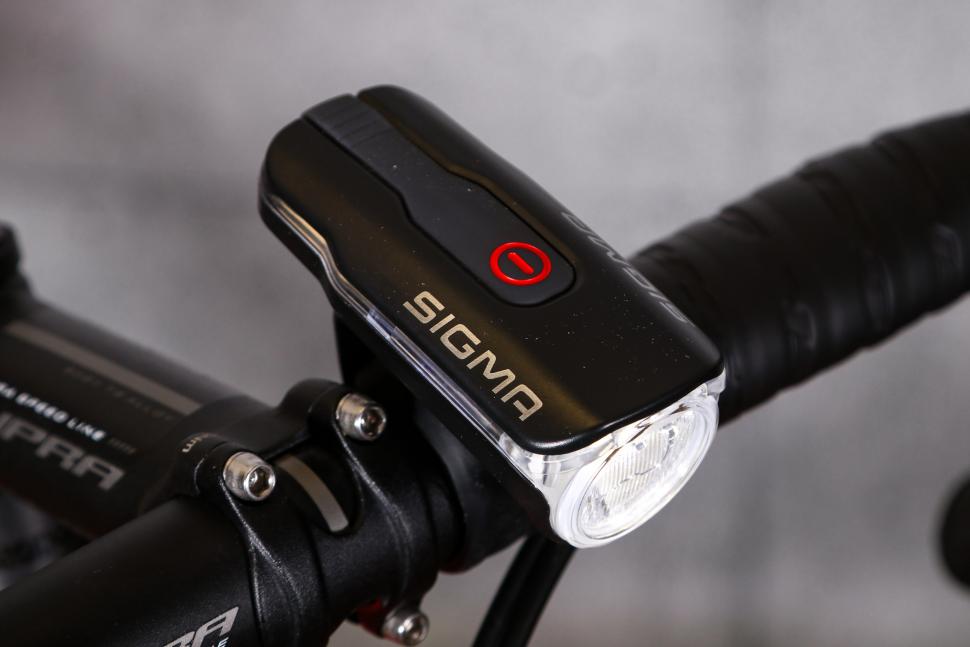
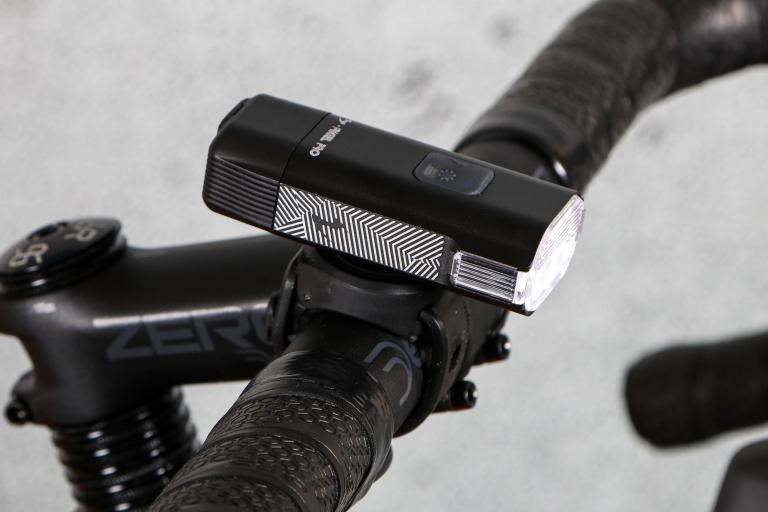
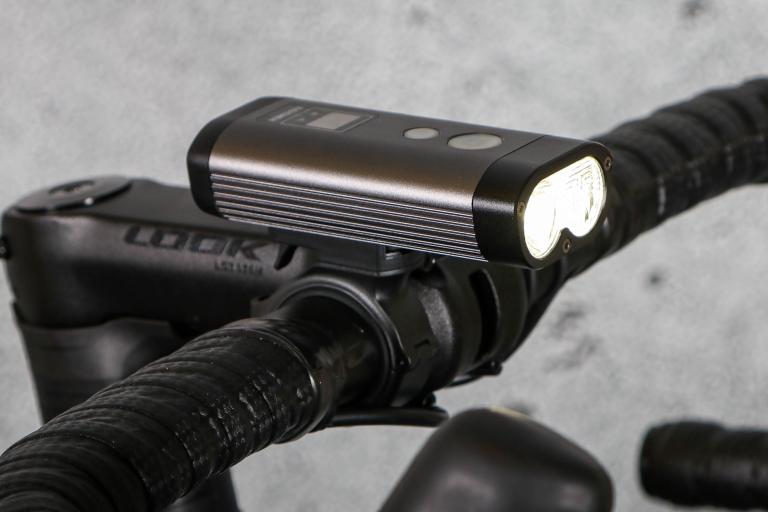

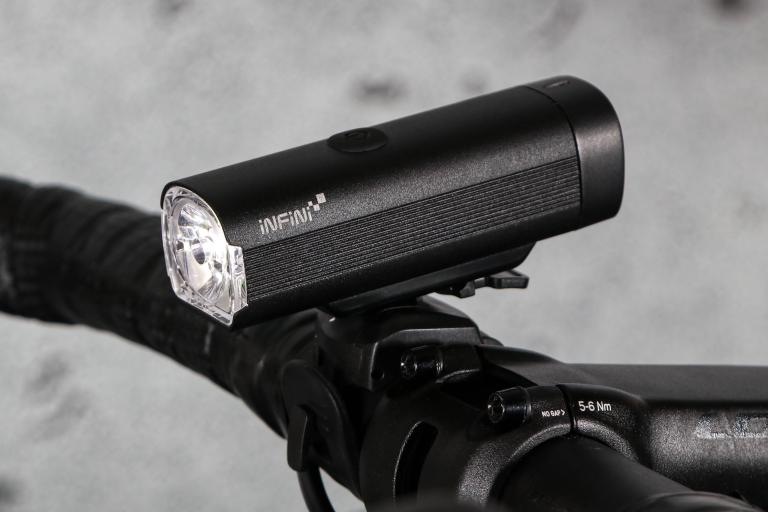
Add new comment
8 comments
"are unphased by the everyday carelessness"
Homophones suck.
Fortunately, we have developed distinct spellings to avoid confusion (in writing at least). I think the writer meant "unfazed".
No - it's resistant to phaser blasts.
Although I'm not sure a garden hose is an effective substitute test for that.
Bike light is clearly not out of phase with the rider, and therefore is unphased ?
"Flashing and pulsing modes are also a no-no since these could dazzle or distract, and god knows you don't want other road users noticing you."
Oh come off it. If you're relying on lights that dazzle and distract to get you noticed and keep you safe, you're doing it wrong, and you're not doing the rest of us any favors either.
Beyond that, how many people are doing significant amounts of riding at 20+ mph on pitch black roads? So why is this light's apparent unsuitability for that task cause to mark it down, especially when the light's clear raison d'etre is courteous use around other road and path users, something that not nearly enough lights offer?
As far as I can tell, the main reason to mark this light down is the mount. The angle of the light is paramount, and the rubber strap and one-piece design mean that any time you have to move the light to another bike/reinstall after charging or removing while locked up/etc. it's going to be a bit of a faff and you're likely to set it too high for courteousness or too low for proper beam projection.
I think this is a reference to German rules, rather than the preferance of the reviewer.
"Flashing and pulsing modes are also a no-no since these could dazzle or distract" is a reference to the German rules, while "and god knows you don't want other road users noticing you" is the reviewer's sarcastic commentary on the rules.
Yes, sorry. It seems I misread your criticism. I do think there is quite some gap for sensible lighting in between what the German rules will allow and getting to the point of dazzling anyone.
I often ride on completely unlit roads and 20 mph is not exactly beyong most people once considering downhills. I don't want to ride slowly down every hill dragging my brakes because of limitations in the light.
I think the key is the angle of installation and the ability to switch quickly between more power (for unlit roads especially downhill) and low power for curteous use around other road users.
I have found when riding with lights without a full beam function that many drivers will not consider dipping their lights for a mere cyclist, but with a taste of their own medicine they realise that dipping lights is a good idea.